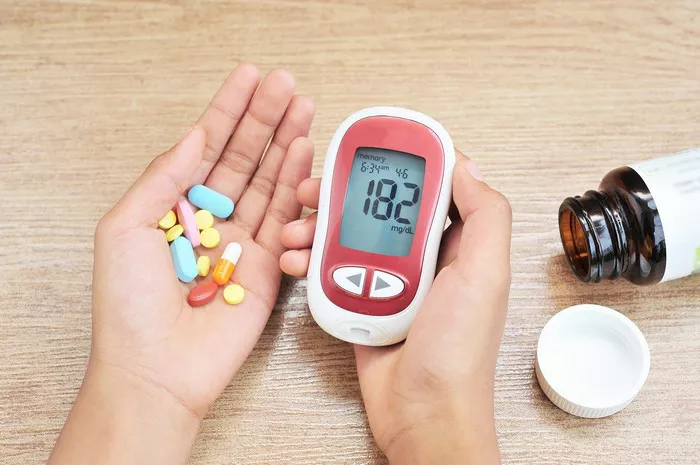Insulin therapy stands as a cornerstone in the management of diabetes, facilitating optimal glycemic control and mitigating the risk of long-term complications. Over the years, advancements in insulin pharmacology have led to the development of various types of insulin formulations, each with distinct onset, duration of action, and pharmacokinetic profiles. From rapid-acting insulins to ultra-long-acting formulations, the spectrum of insulin options offers flexibility and customization to meet the diverse needs of individuals with diabetes. This article delves into the intricacies of the five different types of insulin, shedding light on their characteristics, clinical applications, and evolving role in diabetes care.
1. Rapid-Acting Insulin: Addressing Mealtime Glucose Spikes
Rapid-acting insulins are designed to mimic the physiological insulin response to mealtime glucose spikes, offering rapid onset and short duration of action to control postprandial hyperglycemia effectively. These insulins are administered shortly before or immediately after meals to match the timing of carbohydrate absorption and minimize blood glucose excursions. Common rapid-acting insulins include insulin lispro (Humalog), insulin aspart (NovoLog), and insulin glulisine (Apidra).
Onset and Duration: Rapid-acting insulins typically begin to take effect within 15 minutes of administration, peak between 1 to 2 hours, and have a duration of action lasting approximately 3 to 4 hours. Their rapid onset and short duration make them ideal for covering mealtime insulin needs and addressing postprandial glucose spikes.
Clinical Applications: Rapid-acting insulins are used in combination with basal insulin or long-acting insulins to provide comprehensive glycemic control throughout the day. They are particularly advantageous for individuals with type 1 diabetes who require bolus insulin at mealtimes or for those with type 2 diabetes who experience postprandial hyperglycemia despite oral antidiabetic medications.
Administration: Rapid-acting insulins are typically administered subcutaneously using insulin pens or syringes. They can also be delivered via insulin pumps for continuous subcutaneous infusion, allowing for precise dose adjustments and flexibility in insulin dosing.
2. Short-Acting (Regular) Insulin: Maintaining Basal Insulin Needs
Short-acting insulins, also known as regular insulin, provide basal insulin coverage and help control blood glucose levels between meals and overnight. While their onset of action is slower compared to rapid-acting insulins, they have a more prolonged duration of action, making them suitable for addressing basal insulin requirements. Regular insulin is often used in combination with longer-acting insulins to achieve round-the-clock glycemic control.
Onset and Duration: Short-acting insulins typically begin to take effect within 30 to 60 minutes of administration, peak between 2 to 4 hours, and have a duration of action lasting approximately 6 to 8 hours. Their slower onset and more extended duration make them well-suited for providing basal insulin coverage and managing fasting glucose levels.
Clinical Applications: Short-acting insulins are commonly used in insulin regimens for individuals with type 1 diabetes to provide basal insulin coverage between meals and overnight. They can also be employed in type 2 diabetes management to address fasting hyperglycemia or as part of a comprehensive insulin regimen alongside longer-acting insulins.
Administration: Short-acting insulins are administered subcutaneously using insulin pens or syringes. They can be injected independently or mixed with longer-acting insulins in fixed-ratio combinations for convenience and simplicity.
3. Intermediate-Acting Insulin: Balancing Basal Insulin Needs
Intermediate-acting insulins provide basal insulin coverage and help maintain stable blood glucose levels throughout the day. These insulins have an intermediate onset, peak, and duration of action, making them suitable for addressing basal insulin needs and preventing fluctuations in blood glucose levels. Neutral protamine Hagedorn (NPH) insulin is the most commonly used intermediate-acting insulin.
Onset and Duration: Intermediate-acting insulins typically begin to take effect within 1 to 2 hours of administration, peak between 4 to 12 hours, and have a duration of action lasting approximately 12 to 18 hours. Their intermediate onset and duration make them well-suited for providing basal insulin coverage during daytime hours and overnight.
Clinical Applications: Intermediate-acting insulins are often used in combination with rapid-acting or short-acting insulins to provide comprehensive glycemic control throughout the day. They can be particularly beneficial for individuals with type 2 diabetes who require basal insulin supplementation to manage fasting and postprandial glucose levels.
Administration: Intermediate-acting insulins are administered subcutaneously using insulin pens or syringes. Due to their cloudy appearance, they require thorough mixing before administration to ensure uniform insulin suspension and consistent dosing.
4. Long-Acting Insulin: Providing Continuous Basal Insulin Coverage
Long-acting insulins offer continuous basal insulin coverage with minimal or no pronounced peak effect, providing stable blood glucose control between meals and overnight. These insulins are designed to mimic physiological basal insulin secretion, offering a steady and sustained release of insulin over an extended period. Common long-acting insulins include insulin glargine (Lantus), insulin detemir (Levemir), and insulin degludec (Tresiba).
Onset and Duration: Long-acting insulins typically begin to take effect within 1 to 2 hours of administration, with minimal peak effects, and have a duration of action lasting approximately 18 to 24 hours or longer. Their slow and steady onset and prolonged duration make them well-suited for providing continuous basal insulin coverage throughout the day and night.
Clinical Applications: Long-acting insulins are commonly used as basal insulin therapy in both type 1 and type 2 diabetes management to provide background insulin coverage and maintain stable blood glucose levels between meals and overnight. They are often used in conjunction with rapid-acting or short-acting insulins to achieve comprehensive glycemic control.
Administration: Long-acting insulins are administered subcutaneously using insulin pens or syringes. Due to their clear appearance, they do not require mixing before administration and can be injected independently at the same time each day for consistent basal insulin coverage.
5. Ultra-Long-Acting Insulin: Pioneering Extended Basal Insulin Coverage
Ultra-long-acting insulins represent the latest innovation in insulin therapy, offering an even more extended duration of action compared to traditional long-acting insulins. These insulins form stable depots at the injection site, resulting in a slow and continuous release of insulin over an extended period, thereby providing continuous basal insulin coverage with fewer injections. Insulin degludec (Tresiba) is currently the only ultra-long-acting insulin available.
Onset and Duration: Ultra-long-acting insulins, such as insulin degludec, typically have a gradual onset of action within 1 to 2 hours of administration and offer a duration of action exceeding 42 hours. Their prolonged duration and extended basal insulin coverage provide flexibility in dosing frequency and reduce the risk of hypoglycemia.
Clinical Applications: Ultra-long-acting insulins offer a convenient and simplified dosing regimen, requiring fewer injections compared to traditional long-acting insulins. They are particularly beneficial for individuals who prefer once-daily dosing or have variable daily routines, providing consistent basal insulin coverage with enhanced flexibility and stability.
Administration: Ultra-long-acting insulins are administered subcutaneously using insulin pens or syringes. They can be injected once daily at any time of day, offering flexibility in dosing without compromising efficacy or safety.
Conclusion: Tailoring Insulin Therapy to Individual Needs
In conclusion, the diverse spectrum of insulin formulations offers a range of options to tailor insulin therapy to individual patient needs, preferences, and lifestyle factors. From rapid-acting insulins for mealtime glucose control to ultra-long-acting insulins for extended basal coverage, each type of insulin plays a unique role in achieving optimal glycemic control and minimizing the risk of diabetes-related complications. Healthcare providers should collaborate with patients to develop personalized insulin regimens, taking into account factors such as insulin sensitivity, carbohydrate intake, activity level, and treatment goals. With ongoing advancements in insulin pharmacology and delivery systems, the future holds promise for further innovations in insulin therapy, ultimately empowering individuals with diabetes to live healthier, more fulfilling lives.

























